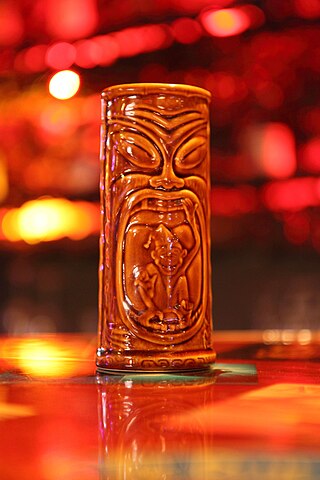
Tiki culture is an American-originated art, music, and entertainment movement inspired by Polynesian, Melanesian, and Micronesian cultures, and by Oceanian art. Influential cultures to Tiki culture include Australasia, Melanesia, Micronesia, Polynesia, the Caribbean Islands, and Hawaii. The name comes from Tiki, the Māori name for the first human, often represented in the form of hei-tiki, a pendant and important taonga. The hei-tiki was often appropriated by Europeans as a commercialised good luck charm, hence the name of Tiki culture. Despite spanning over 10,000 miles and including many different unrelated cultures, religions, and languages, Tiki aesthetic is considered by some to be amalgamated into one "fantasia of trans-Pacific cultures" and "colonial nostalgia". Because of this, and the simplistic view of the Pacific taken by the aesthetic, Tiki culture has often proved controversial.

Fort Lauderdale is a coastal city located in the U.S. state of Florida, 30 miles (48 km) north of Miami along the Atlantic Ocean. It is the county seat of and most populous city in Broward County with a population of 182,760 at the 2020 census, making it the tenth-most populous city in Florida. After Miami and Hialeah, Fort Lauderdale is the third-most populous city in the Miami metropolitan area, which had a population of 6,166,488 in 2019.
Donn Beach was an American adventurer, businessman, and World War II veteran who was the "founding father" of tiki culture. He is known for opening the first prototypical tiki bar, Don’s Beachcomber, during the 1930s in Hollywood, California, which was expanded to a chain of dozens of restaurants throughout the United States. He later built the International Market Place and additional establishments in what was then the Territory of Hawaii. He married three times.

Trader Vic's is a restaurant and tiki bar chain headquartered in Emeryville, California, United States. Victor Jules Bergeron, Jr. founded a chain of Polynesian-themed restaurants that bore his nickname, "Trader Vic". He was one of two people who claimed to have invented the Mai Tai. The other was his amicable competitor for many years, Donn Beach of the "Don the Beachcomber" restaurants.
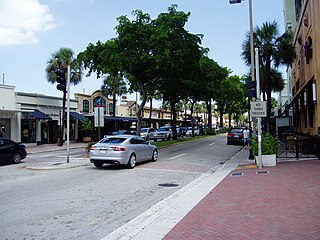
Las Olas Boulevard is a major east-west thoroughfare in Fort Lauderdale, Florida, United States that runs from SW 1st Avenue in the Central Business District to Florida State Road A1A in Fort Lauderdale Beach. The name "Las Olas" means "The Waves" in Spanish. The road once carried the designations of State Road A1A Alt. and State Road 842.

A tiki mug is a large ceramic cocktail drinking vessel that originated in tiki bars and tropical-themed restaurants. The term "tiki mug" is a blanket term for the sculptural drinkware even though they vary in size and most do not contain handles. They typically depict Polynesian, mock-Polynesian, tropical, nautical, or retro themes, and as the term is used generically do not always emulate a tiki. When used to serve drinks they are frequently garnished with fruit or decorative drink umbrellas and swizzle sticks.

A tiki bar is a themed drinking establishment that serves elaborate cocktails, especially rum-based mixed drinks such as the Mai Tai and Zombie cocktails. Tiki bars are aesthetically defined by their tiki culture décor which is based upon a romanticized conception of tropical cultures, most commonly Polynesian. Some bars also incorporate general nautical themes or retro elements from the early atomic age.

Lock No. 1, North New River Canal, which opened in 1912, is a historic lock on the North New River Canal located between Davie and Plantation, Florida, United States. It is located south of Plantation on SR 84. On February 17, 1978, it was added to the U.S. National Register of Historic Places.
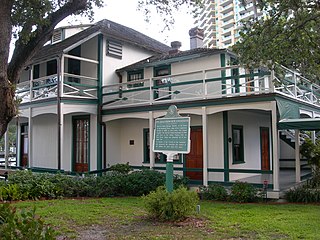
Stranahan House is the home of Fort Lauderdale pioneers Frank and Ivy Stranahan. Built in 1901 as a trading post and converted into a residence for the Stranahans in 1906, the house is the oldest surviving structure in Broward County. It was placed on the National Register of Historic Places in 1973 and today operates as a historic house museum. The House is open for guided tours at 1, 2, or 3 p.m. most Tuesdays through Fridays, and hosts special events throughout the year. Check their website for availability.

The Croissant Park Administration Building is a historic site in Fort Lauderdale, Florida. It is located at 1421 South Andrews Avenue. On July 25, 2001, it was added to the U.S. National Register of Historic Places.

The Link Trainer Building is an historic structure in Fort Lauderdale, Florida. On May 20, 1998, it was added to the U.S. National Register of Historic Places.
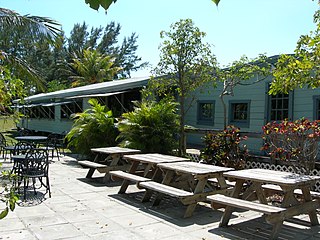
Cap's Place, originally named Club Unique, is a historic site in Lighthouse Point, Florida, United States. It opened in 1928 as a speakeasy, gambling den and restaurant. It is the oldest extant structure in the City of Lighthouse Point and the oldest commercial enterprise in the area. It has operated as a restaurant since opening and is the oldest restaurant in Broward County, Florida. On August 10, 1990, it was added to the U.S. National Register of Historic Places. It is located at 2980 Northeast 31st Avenue. There is no parking at the site ; all patrons must take a free boat shuttle to the facility.
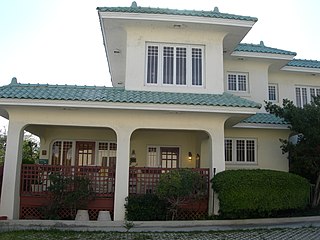
The Sam Gilliam House is a historic home in Fort Lauderdale, Florida. It is located at 11 Southwest 15th Street. On March 29, 2001, it was added to the U.S. National Register of Historic Places.

The Snow-Reed Swing Bridge is one of the oldest bridges in the Fort Lauderdale area, and one of the few remaining swing bridges in Florida. Located between the 300 and 500 block of Southwest 11th (Palm) Avenue in Fort Lauderdale, Florida, the bridge connects the neighborhoods of Sailboat Bend and Riverside Park. In 1989 it was officially renamed and designated a historic landmark.
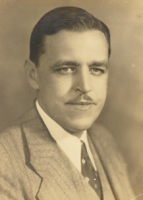
Gustav Adam Maass Jr. (1893–1964) was an American architect working primarily in the Mediterranean Revival style who designed public buildings and private homes in and around Palm Beach, Florida, from the 1920s until his death in 1964.

The Zombie Hut was a Hawaiian/Polynesian-themed restaurant, nightclub and Tiki bar located on Freeport Blvd. between Florin Road and Sutterville Road in Sacramento, California that originally opened in 1945 after the end of WWII and continuing for 45 years until its closing in 1990. Inspired by the 1930s Tiki craze, the restaurant was owned by Johnny Quaresma from 1945 to 1952 when Ed and Beatrice Hill purchased the business. The Hills eventually sold the Zombie Hut to Bruce Brooks, who owned it until its closing in 1990.
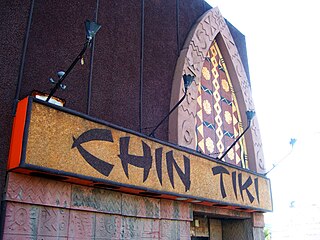
Chin Tiki was a tiki-themed supper club, nightclub and banquet hall in Detroit, Michigan owned by Marvin Chin. It closed in 1980 and was demolished in 2009.
The Q.B. Cooler is a vintage tiki cocktail invented by Donn Beach that calls for a mixture of several rums, two syrups, fruit juices, and honey, mixed with club soda and dashes of Pernod, bitters, and grenadine. Another version purported to be from 1937 is slightly different and calls for varying rum proportions and ginger syrup in place of the fassionola and Pernod.

Jeff "Beachbum" Berry is an American restaurant owner, author, and historian of tiki culture, particularly the drinks associated with the tiki theme. In addition to researching and reconstructing lost recipes, he has invented and published his own cocktail recipes.
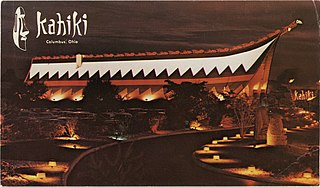
The Kahiki Supper Club was a Polynesian-themed restaurant in Columbus, Ohio. The supper club was one of the largest tiki-themed restaurants in the United States, and for a time, the only one in Ohio. It operated at its Eastmoor location on Broad Street beginning in 1961, at the height of tiki culture's popularity. The Kahiki was listed on the National Register of Historic Places in 1997, but closed and was demolished in 2000. It was described as an exceptionally important example of a themed restaurant and the most elaborate tiki restaurant ever built.





















